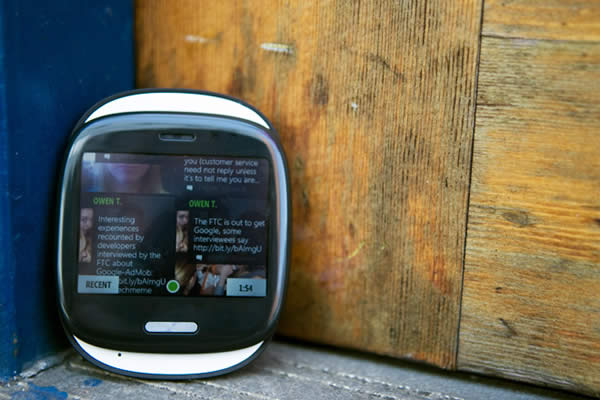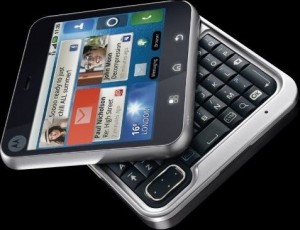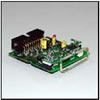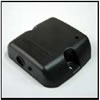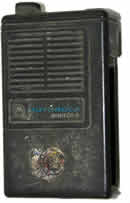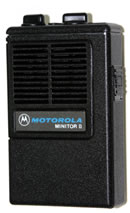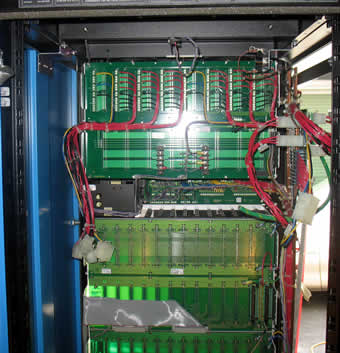BloostonLaw Telecom Update Published by the Law Offices of Blooston, Mordkofsky, Dickens, Duffy & Prendergast, LLP [Portions reproduced here with the firm's permission.] www.bloostonlaw.com |
| Vol. 13, No. 20 | May 12, 2010 |
 McDowell, Baker Oppose FCC’s “Third Way” In a joint statement, FCC Commissioners Robert McDowell and Meredith Baker said the FCC is crossing “a regulatory Rubicon by classifying Internet access service as traditional telephone service under Title II of the Communications Act (see following). This proposal is disappointing and deeply concerns us. It is neither a light-touch approach nor a third way. Instead, it is a stark departure from the long-established bipartisan framework for addressing broadband regulation that has led to billions in investment and untold consumer opportunities. It also poses serious ramifications across the globe. After several government investigations, no evidence of systemic failure in the broadband market has been presented to justify this new, more onerous regulatory regime. Additionally, without a specific mandate from Congress, the appellate courts are likely to hand the Commission another stinging rebuke for attempting to shatter the boundaries of its statutory authority. This proposal risks the credibility of our institution: Government agencies simply cannot create new legal powers beyond those granted by Congress. “In the interim, as the Commission has been warned by a wide variety of investors, an attempt to foist burdensome rules excavated from the early-Ma Bell-monopoly era onto 21st Century networks will usher in a tumultuous new age of regulatory uncertainty that will inhibit the investment of risk capital America badly needs to improve and expand our broadband infrastructure and create jobs. “Fundamentally, this dramatic step to regulate the Internet is unnecessary. The recent Comcast decision leaves the Commission with ample authority to implement the most important portions of the National Broadband Plan, should it choose to do so. We look forward to learning from the debate and remain hopeful for a fair, transparent and efficient process that leads to a final decision well rooted in both the facts and the law.” |
 INSIDE THIS ISSUE - FCC develops “third way” response to D.C. Circuit’s “Comcast” decision.
- FCC proposes $284,250 fine for failing to pay into USF.
- FCC proposes rule changes to enable more flexibility of UPCS devices in 1920-1930 MHz band.
- FCC releases telephone penetration income report.
- FCC sets comment cycle for cyber security NOI.
|
FCC Develops “Third Way” Response To D.C. Circuit’s “Comcast” Decision Approach Would Reclassify Only Transmission Component Of Broadband Internet Access As “Telecommunications Service” Under Title II On April 7, the U.S. Court of Appeals for the District of Columbia Circuit —in Comcast v. FCC—raised questions about whether the Commission could regulate broadband Internet access traffic under its Communications Act Title I “ancillary” authority. Last week, FCC Chairman Julius Genachowski and General Counsel Austin Schlick issued statements regarding how the Commission intended to respond to the Court’s Comcast decision. Genachowski said there were three options: (1) to continue relying on ancillary authority; (2) reclassify Internet communications as “telecommunications services” under Title II of the Act; or (3) find a “third way”—i.e., reclassify only the transmission component of broadband Internet access services as telecommunications services. More specifically, Genachowski said: One, the Commission could continue relying on Title I “ancillary” authority, and try to anchor actions like reforming universal service and preserving an open Internet by indirectly drawing on provisions in Title II of the Communications Act (e.g., sections 201, 202, and 254) that give the Commission direct authority over entities providing “telecommunications services.” Two, the Commission could fully “reclassify” Internet communications as a “telecommunications service,” restoring the FCC’s direct authority over broadband communications networks but also imposing on providers of broadband access services dozens of new regulatory requirements. However, the FCC Chairman pointed to a “third way,” developed by the General Counsel. In general, this approach would: - Recognize the transmission component of broadband access service—and only this component—as a telecommunications service;
- Apply only a handful of provisions of Title II (Sections 201, 202, 208, 222, 254, and 255) that, prior to the Comcast decision, were widely believed to be within the Commission’s purview for broadband;
- Simultaneously renounce—that is, forbear from—application of the many sections of the Communications Act that are unnecessary and inappropriate for broadband access service; and
- Put in place up-front forbearance and meaningful boundaries to guard against regulatory overreach.
In building the framework for the “third way” approach, General Counsel Schlick begins with National Cable and Telecommunications Association v. Brand X Internet Services, Inc., in which a majority of the Justices deferred to the Commission, and permitted its “information service” classification of cable modem offerings because the Communications Act “leaves federal telecommunications policy in this technical and complex area to be set by the Commission.” Justice Scalia, joined by Justices Souter and Ginsburg, concluded in a strong dissent that the “computing functionality” and broadband transmission component of retail Internet access service must be acknowledged as “two separate things.” The former involves unregulated information services while the latter is a telecommunications service. The dissent therefore would have held that the Commission’s information service classification of cable broadband Internet access service was an unreasonable and unlawful interpretation of the Communications Act, Schlick said. According to Schlick, adopting Justice Scalia’s bifurcated view of broadband Internet access service is entirely consistent with (although not compelled by) the Brand X majority opinion. This course would also sync up the Commission’s legal approach with its policy of (i) keeping the Internet unregulated while (ii) exercising some supervision of access connections, Schlick said. The provisions of Title II would apply solely to the transmission component of broadband access service, while the information component would be subject to, at most, whatever ancillary jurisdiction may exist under Title I, he added. In addition to narrowing the applicability of Title II, the Scalia approach enables the Commission to use the powerful deregulatory tool Congress provided specifically for tailoring Title II’s requirements to the Internet Age, and thereby establishing appropriately confined boundaries for regulation, Schlick said. When Congress amended the Communications Act in 1996, most consumers reached the Internet using dial-up service, subject then (as it is now) to Title II, the General Counsel explained. He added that cable modem service was emerging, though, and telephone companies were beginning to offer DSL broadband connections for Internet access under Title II. Aware of the changing landscape, Congress gave the FCC authority and responsibility via section 10 of the Communications Act to “forbear” from applying telecommunications regulation, so that the new services are not subject to needlessly burdensome regulations, Schlick said. And in section 706 of the Telecommunications Act of 1996, Congress directed the FCC to use its new forbearance power to “encourage the deployment on a reasonable and timely basis of advanced telecommunications capability to all Americans” Schlick said. He said: “The upshot is that the Commission is able to tailor the requirements of Title II so that they conform precisely to the policy consensus for broadband transmission services. Specifically, the Commission could implement the consensus policy approach—and maintain substantively the same legal framework as under Title I—by forbearing from applying the vast majority of Title II’s 48 provisions to broadband access services, making the classification change effective upon the completion of forbearance, and enforcing a small handful of remaining statutory requirements. As few as six provisions could do the job”: - Sections 201, 202, and 208. These fundamental provisions collectively forbid unreasonable denials of service and other unjust or unreasonable practices, and allow the Commission to enforce the prohibition
- Section 254. Section 254 requires the Commission to pursue policies that promote universal service goals including “[a]ccess to advanced telecommunications and information services . . . in all regions of the Nation.”
- Section 222. Title II requires providers of telecommunications services to protect the confidential information they receive in the course of providing service.
- Section 255. Telecommunications service providers and providers of telecommunications equipment or customer premises equipment must make their services and equipment accessible to individuals with disabilities, unless not reasonably achievable.
A Stronger Legal Foundation. Applying a few foundational sections of Title II to the transmission component of broadband Internet access service would establish a strengthened legal basis on which to implement the consensus policy for broadband access, Schlick said. “If broadband access service is found to contain a separate telecommunications service, as Justices Scalia, Souter, and Ginsburg believed was the only plausible view, then the Commission may protect broadband consumers by grounding its authority in Title II directly as well as in Title I as ancillary authority. This belt-and-suspenders approach—relying on direct statutory authority in addition to ancillary authority—puts the Commission in an inherently more secure position than the Title I approach, which allows only assertions of ancillary authority,” the General Counsel added. “The legal issue surrounding the third way is not whether the Commission can sufficiently protect consumers in a particular context, as it is under the information service classification and the Comcast opinion, but whether the Commission’s decision to adopt Justice Scalia’s classification of broadband access would be permissible. Brand X all but answers that question,” he said. Then returning to the majority opinion, Schlick said: “The questions the Commission resolved in the order under review,” Justice Thomas summed up, “involve a subject matter [that] is technical, complex, and dynamic. The Commission is in a far better position to address these questions than we are.” In other words, the high court granted deference to the expert agency. BloostonLaw contacts: Hal Mordkofsky, Ben Dickens, Gerry Duffy, and John Prendergast. FCC PROPOSES $284,250 FINE FOR FAILING TO PAY INTO USF: The FCC has issued a Notice of Apparent Liability for Forfeiture (NAL), finding that NTS Communications, Inc., apparently violated section 254(d) of the Communications Act, and section 54.706(a) of the Commission’s rules, by willfully or repeatedly failing to contribute fully and timely to the Universal Service Fund (USF). The FCC found that NTS is apparently liable for a total forfeiture of $284,250. The Commission found this significant forfeiture is warranted based on NTS’s repeated failures to satisfy its obligations to the USF, spanning well over a year and amounting to a delinquency of more than $248,000 to the USF. The FCC ordered NTS to submit within 30 days a report, supported by a sworn statement or declaration under penalty of perjury of a corporate officer, setting forth in detail its plan to come into compliance with the payment obligations discussed herein. NTS is a Texas-based company that has provided telecommunications services since 1981. Through subsidiaries, NTS provides facilities-based and resold long distance, private line, frame relay, ATM, and toll-free telecommunications services. NTS is owned by Xfone, Inc. In July 2009, the Universal Service Administrative Company (USAC) referred NTS to the Enforcement Bureau for potential enforcement action, alleging that NTS had failed to comply with the Commission’s USF contribution rules. The Bureau initiated an investigation against NTS on July 31, 2009, issuing a letter of inquiry (LOI) to NTS seeking information about its compliance with USF and other related regulatory obligations. NTS’s LOI Response indicates that it failed to pay certain USAC invoices in full and on time. Specifically, NTS failed on two occasions to pay any contribution toward its outstanding USF obligations, and it made only partial payments toward its USF obligations on 12 additional occasions. NTS failed to make any payment on its USF invoice for the payment due in February 2009, made only partial payments toward its outstanding balance from March to November 2009, then failed to make any payment toward its balance in December 2009. NTS resumed making partial payments toward its outstanding balance in January 2010. NTS claims it was not able to make full payments to the USF because of financial difficulties. The FCC does not credit this argument. During the same period of time, the company continued to collect USF surcharges from its customers and it continued to receive disbursement credits from the USF. As a result of its failures to pay, NTS has maintained large outstanding USF balances with USAC since early 2009, and as of March 22, 2010, had a past due balance of more than $248,000. NTS does not dispute that it is obligated to pay the invoiced amounts or that it has failed to pay the full balance due to the USF. BloostonLaw contacts: Ben Dickens, Gerry Duffy, and Mary Sisak. FCC PROPOSES RULE CHANGES TO ENABLE MORE FLEXIBILITY OF UPCS DEVICES IN 1920-1930 MHz BAND: The FCC has adopted a Notice of Proposed Rulemaking (NPRM), proposing changes to Part 15 of the Rules to enable Unlicensed Personal Communications Service (UPCS) devices operating in the 1920-1930 MHz band (known as the UPCS band) to make more efficient use of this spectrum. The FCC says it took this action in response to a Petition for Rulemaking filed by the Digital Enhanced Cordless Telecommunications Forum (DECT), an association that promotes digital cordless radio technology for short-distance voice and data applications. The current rules prevent UPCS devices from accessing channels where a certain level of radio noise is detected, even though those channels remain usable. The proposed rule changes would adjust the radio noise level at which a channel would be deemed usable. The FCC specifically proposes to revise Section 15.323 of its Rules to increase the least-interfered channel threshold that a UPCS device must monitor to determine whether there is a channel available on which to transmit (henceforth referred to as the least-interfered channel access method). The Commission also proposes to reduce from 40 to 20 channels the number of duplex system access channels that a UPCS device must monitor and use under the least-interfered channel access method. The proposed changes would increase the number of channels that could be used by UPCS devices, particularly those devices designed to transmit on wider bandwidth channels, and thus facilitate the introduction of unlicensed devices capable of providing access to broadband services in the 1920-1930 MHz band. The FCC requests comment on these proposals. Comments in this ET Docket No. 10-97 and RM-11485 proceeding will be due 30 days after publication of the item in the Federal Register, and replies will be due 15 days thereafter. BloostonLaw contacts: Hal Mordkofsky, John Prendergast, and Richard Rubino. FCC RELEASES TELEPHONE PENETRATION INCOME REPORT: The FCC has released a report presenting data on the percentage of households with telephone service on a state-by-state basis for various income categories. The report presents telephone penetration statistics based on individual household data from the Current Population Survey (CPS) conducted by the Census Bureau in March 2009. This report, which is updated annually, provides more detailed information on telephone penetration to complement the information available in Telephone Subscribership in the United States, which is published three times a year. Specifically, this report is designed to track the effects of federal and state Universal Service Fund Lifeline and Linkup support mechanisms that defray the cost of telephone service for low-income consumers. In March 2009, penetration among low-income households (under $10,000 annual income in 1984 dollars or $20,732 annual income in 2009 dollars) nationwide was 90.4%. This contrasts with an overall nationwide penetration rate of 95.6% in March 2009, and represents an increase of 0.7% over the March 2008 nationwide penetration rate among low-income households of 89.7%. Since 1985, when the FCC first established Lifeline to help low-income households afford the monthly cost of telephone service, penetration rates among low-income households have grown from 80.0% to 90.4%. States that have provided a high level of lifeline support for telephone service for low-income consumers experienced an average growth in penetration of 4.6% for low-income households from March 1997 to March 2009. In contrast, states that provided a low level of lifeline support experienced an average growth of 2.9% in telephone penetration rates for low-income households between March 1997 and March 2009. Among states, penetration rates among low-income households ranged from a high of 97.0% to a low of 81.1% in March 2009. BloostonLaw contacts: Ben Dickens, Gerry Duffy, and Mary Sisak. FCC SETS COMMENT CYCLE FOR CYBER SECURITY NOI: The FCC has set a comment cycle for its Notice of Inquiry (NOI) seeking comment on whether it should establish a voluntary program under which participating communications service providers would be certified by the FCC or a yet to be determined third party entity for their adherence to a set of cyber security objectives and/or practices (BloostonLaw Telecom Update, April 28). Comments in this PS Docket No. 10-93 proceeding are due July 12, and replies are due September 8. The Commission seeks comment on the components of such a program, if any, and whether such a program would create business incentives for providers of communications services to sustain a high level of cyber security culture and practice. The Commission's goals in this proceeding are to: (1) Increase the security of the nation's broadband infrastructure; (2) promote a culture of more vigilant cyber security among participants in the market for communications services; and (3) offer end users more complete information about their communication service providers' cyber security practices. The Commission seeks comment on whether the program would meet these goals. The Commission also seeks comment on other actions it should take, if any, to improve cyber security and to improve education on cyber security issues. BloostonLaw contacts: Hal Mordkofsky, Ben Dickens, Gerry Duffy, and John Prendergast. FCC SETS COMMENT CYCLE FOR NOI ON SURVIVABILITY OF BROADBAND NETWORKS: The FCC has set a comment cycle for its Notice of Inquiry (NOI) addressing its ability to understand the present state of survivability in broadband communications networks and to explore potential measures to reduce network vulnerability (BloostonLaw Telecom Update, April 21). The NOI explores potential failures in network equipment or severe overload conditions, such as would occur in natural disasters, pandemics, and other disasters or events that would restrain the ability to communicate. The Commission seeks comment broadly on the ability of existing networks to withstand localized or distributed physical damage, including whether there is adequate network redundancy and the extent of survivability of physical enclosures in which network elements are located, and severe overloads. Comments in this PS Docket No. 10-92 proceeding are due June 25, and replies are due July 26. BloostonLaw contacts: Hal Mordkofsky, Ben Dickens, Gerry Duffy, and John Prendergast. FCC SEEKS COMMENT ON WAYS FOR WIRELESS CONSUMERS TO AVOID “BILL SHOCK”: The FCC is seeking comment on ways to alert wireless consumers about the high charges they may receive before they add up on their bills—i.e., “bill shock.” Specifically, the FCC seeks comment on the feasibility of instituting usage alerts and cutoff mechanisms similar to those required under the European Union (EU) regulations that would provide wireless voice, text, and data consumers in the United States a way to monitor, on a real-time basis, their usage of a wireless communications service, as well as the various charges they may incur in connection with such usage (e.g., roaming services, voice service “minute plans,” text message plans). The Commission seeks comment on whether technological or other differences exist that would prevent wireless providers in this country from employing similar usage controls as those now required by the EU. The FCC also seeks comment on the extent to which consumers currently have the means at their disposal to monitor their wireless usage and are fully aware of the consequences of exceeding their predetermined allocations of voice minutes, text message limits, or data usage. To what extent are U.S. providers already offering such features, and at what cost to the consumer and/or to the provider? Do certain usage controls lend themselves more to one type of service (such as voice) than to another (such as data)? To what extent is such information currently accessible via wireless devices by people with disabilities, and in particular by people who are blind or low vision who need on-screen text and other visual indicators to be accompanied by audio output? Would a requirement for certain type of usage controls prevent or help consumers with hearing, visual, cognitive or other disabilities in receiving the information they need to effectively monitor their usage? The FCC seeks comment on these and other issues relevant to whether the Commission should adopt usage control measures that will help consumers to avoid receiving higher than expected bills for their wireless communications services. Comments in this CG Docket No. 09-158 proceeding will be due 45 days after publication of the item in the Federal Register, and replies will be due 15 days thereafter. BloostonLaw contacts: Hal Mordkofsky, John Prendergast, Cary Mitchell, and Robert Jackson.  This newsletter is not intended to provide legal advice. Those interested in more information should contact the firm. |





















